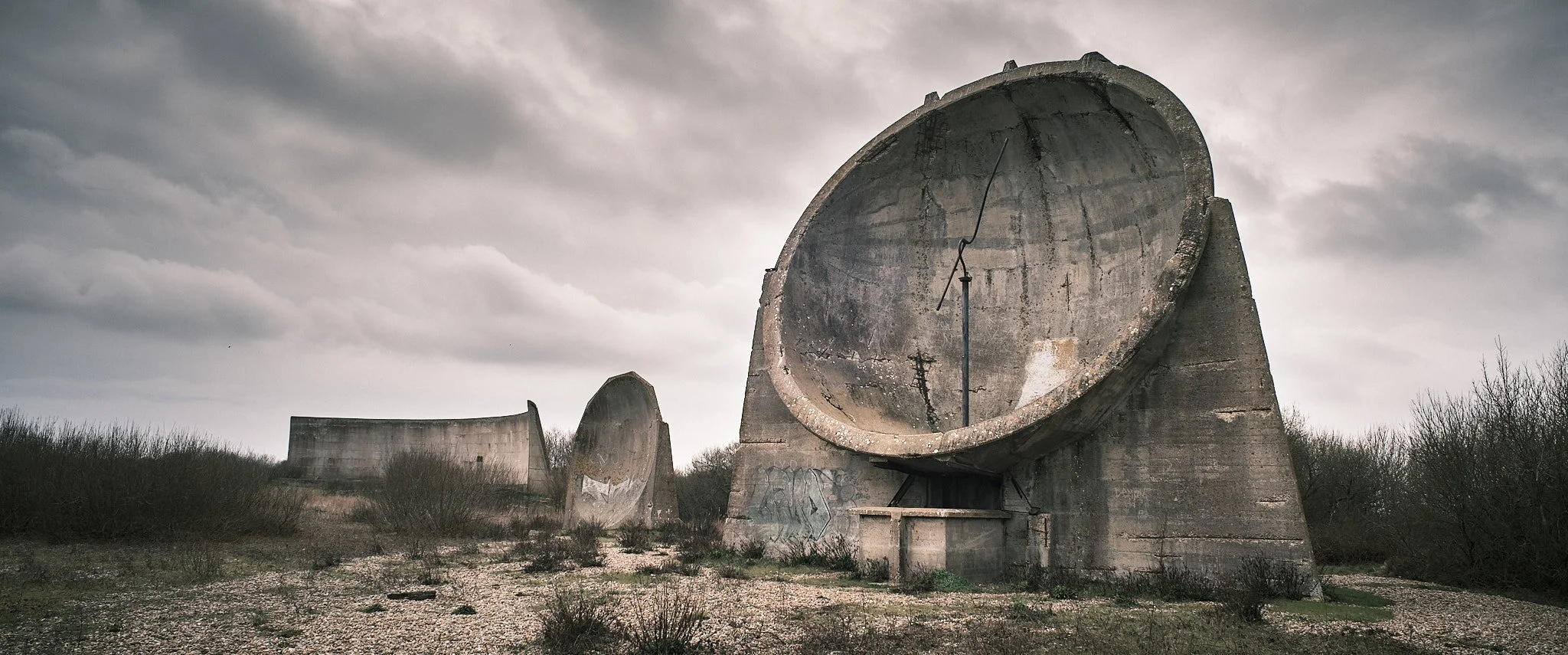On Denge Marsh
I’d been here once before, in 2010, and considering these are only 45 miles or so away from home it’s a bit surprising that I haven’t been back in the past 13 years. The Denge Sound Mirrors at Greatstone are listed structures and not generally accessible. They are located on a small island on a nature reserve operated by the Royal Society for the Protection of Birds, in a former gravel quarry only accessed a few times each year with visitor numbers being controlled to preserve the mirrors themselves and the land they’re on. During the bird nesting and breeding season no access is permitted. We were fortunate to get onto a photography day where visitor numbers are greatly restricted (there were only thirteen people visiting plus a couple of RSPB volunteers).
The three mirrors here consist of a 20 foot dish, built in 1928, a 30 foot dish (1930) and the 200 foot wall (1930). The idea behind the mirrors is that they ‘hear’ the sound of approaching aircraft and this is relayed via a type of stethoscope arrangement to a person listening through a set of headphones. The idea went back to WW1, and following the war a listening array, initially made up of dug pits and microphones, was built across Romney Marsh. During the 1920s the design was improved which led to the mirrors being built not just at Denge Marsh but at other locations along the coastline. The 20 foot mirror was considered too small and inaccurate for locating where an aircraft was coming from so the 30 foot mirror was built (at an improved angle) and this was then followed by the 200 foot wall which had a greater number of microphones installed. While the system worked it became rapidly obsolete, firstly because aircraft speeds were increasing and by the time an approaching craft had been located it had already become too close for any appropriate action to be taken. Secondly, in 1935 the system of radar was invented which was far superior in quickly detecting the presence of approaching aircraft. However the network of sound mirrors along the English coastline had led to the formation of linked listening stations with good communications. This was applied to the network of radar stations that were formed during WW2 meaning that while the German radar system was superior to the British system there was better communication between stations and the military in England.
It’s a rather surreal experience to be almost alone on the site with these brutalist structures. There’s little outside noise apart from a few small birds and some Canada geese - the odd helicopter and a train from the nearby Romney, Hythe and Dymchurch Railway being tested before the railway opens for visitors next weekend occasionally break the silence. Near the 200 foot wall the sound is different, not an echo, but an odd clarity where you can hear things being said elsewhere on the site you might otherwise not detect. Walls have ears.
All photographs taken with a Fujifilm GFX50Sii and GF 23mm, 35-70mm, and 45-100mm lenses, and Minolta Rokkor 28mm lens.













